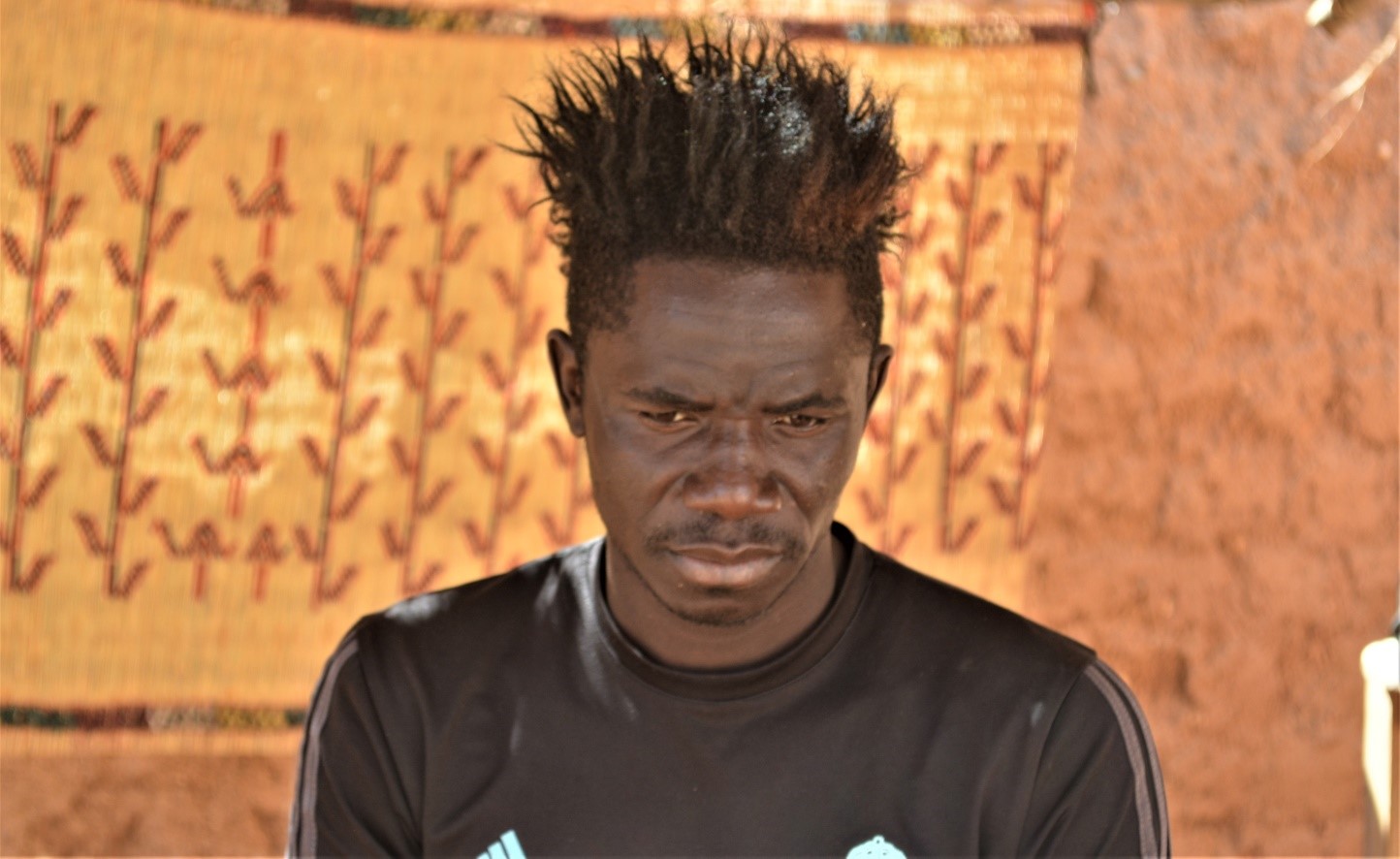By: Evelyn Kpadeh Seagbeh
Migrants from West Africa taking up the journey through the Sahara Desert set off convinced that it’s a smooth ride, once they make it Libya or Algeria. The notion is that when they pass through Morocco, they can easily sway their way into Europe, but many of them now regret those thoughts.
The perilous and torturous journey leaves the migrants with two possibilities – survive or die. It is a survival of the fittest challenge as the desperate migrants risk their lives through the diverse illegal routes with the help of their ‘transporters’ (smugglers) cutting through vast lands belonging to no man, no government.
Sadly, many are left disappointed should they make it through the Mediterranean into Europe when the reality dawns on them that after all, it’s not a land of milk and honey.
“Two things, sometimes when your relative go and you are not hearing from them, just know that they have either died in the desert or they are in prison.”
“Before I left Liberia, I heard my friends saying that once one enters Libya they can be sitting at night seeing the light shining in Europe,” Willie Macelor (Geelor) explained. He now knows that that’s not the reality.
Thinking deep, wishing he had never taken the decision to leave his country (Liberia) for Europe; 24-year-old Willie’s goal was to enter Spain to play for international football teams to help his poor and aging mother back home. But soon did he realize that the journey was not as easy as he may have been told by his peers.
Willie hewed for gold at a local gold mine for almost 3 months in Liberia’s South Eastern County (Grand Gedeh) to raise his transportation to embark on his journey to Europe in late 2016.
Disparate migrants traveling by road are bound to use many different illegal routes and connections. They suffer at the hands of their smugglers who extort money from them at the very beginning of their expedition with the middleman (agent) making their arrangements. This often leaves the migrants feeling relax believing they are in safe hands and thinking that that the journey to Europe is now a ‘sit and ride on’.
To the contrary, their fate stares at them in their faces with the sudden disappearances of their travel mediators along the journey. The ‘transporters’ get agry and the migrants bear the wrath.
For Willie, the journey turned sour in Mali – all the money he had ran out. His only way out was to find a daily hired work with a Chinese company constructing roads in Mali to raise money for the next stage of his journey. He did not want to tamper with his with the five grams of gold he hid on him so tactfully from Liberia that no one discovered it.
Willie spent couple of months in Mali where he was paid CFA1,000 per day raising about CFA 21,000 out of which he feed himself and took care of stuff and transportation.
During evening hours, he went out and practice football with local football teams. He soon became admired by his teammates and spectators, but his mind was fixed on Europe. He was of the conviction that once he made it there his life and that of his family would change for the better; especially his poor mother. At the end of his stay, in May 2017, Willie took on the road – this time into Algeria.
He was not alone on this road; each day their numbers kept increasing to the point that they were about 15-20 men riding in the back of a Hilux pickup. There were more Malians, Guineas and other nationalities. He was the only English-speaking person on board that journey. As they squeeze themselves in the back of the pickup, their ‘transporters’ would warn them to sit mindfully as they would not take responsibility for any misfortune.
“We can be so squeezed-up in the back of the pickup; if you feel like sleeping you can’t, because if you sleep you will fall from the car and when you fall down or die they will leave you in the desert,” Willie explained.
Over half of the 24, 808 migrants rescued and assisted by the International Organization for Migration (IMO) between 2016 to 2019, are young people.
It took Willie and the other migrants on board six days of sleepless nights to get to Algeria.
“The people who were carrying us dropped us in the desert, turned around and left. We spent two days there, no food, and then approaching three days, the driver came back and we started the journey. While going the car tire burst and when we looked we saw men coming towards us with guns, they call themselves ‘Red Ban’. I wanted to run, then my friend held me and said ‘don’t run before they kill you, sit down’.”
There is no escaping from the Red Ban. Migrants would only get their freedom from their unmerciful treatment after paying their ransoms – an exorbitant amount that force them to call their families back at home to help them secure their freedom. They are not always lucky. Some die from the torture and hard labor.
“They caught us and took us in an old house and told the driver to carry the car. When I entered, I was the only English man among everyone. They asked us to give all the money and phones we had or else we will not get out. I started to cry. “I was so afraid because I was told that the hijackers kill people for common.”
In most cases, some of the migrants who take on this illegal journey leave without the knowledge of their parents or relatives. Calling back home for ransom was a mission impossible for Willie. His mother is old and survives from local farming just to feed a day. His father being principle-minded and disciplinary and also not knowing that he had traveled that far would settle for no such arrangement. The only thing that came to Willie’s mind was to fight back and find a way to escape. A risky play that had killed several migrants.
I came in contact with several migrants in Niger – all of whom said they were in search of better opportunities and living standard to help their families back home. They under estimated the dangers involved.
Crossing the Desert
This is where Willie and others describe as “the no man’s land” (death quarter). Speeding and crossing 3.6 million square miles through the Sahara Desert which occupies about 31 percent of Africa; the strong desert breeze and dust cover their faces. The wind is so strong that they hardly hear each other when they speak. They are jammed in the back of the pickups and trucks in their dozens as transporters drive no less than 130 mile per hour.
In the desert, there is no exact road. Some transporters have done this business for several years, they understand the terrain. However, in the event the desert storm rages and all the patch ways disappear, traveling vehicles with all the migrants or travelers on board get lost along the way and as they run out of food and water, death sieges them; the whereabouts of their corpses become unknown.
As Willie and hundreds other made it in this rough terrain, he watched about 12 other pickups, some carrying 15 to 20 migrants onboard each day.
In the middle of the desert while transporters refuel their vehicles, hijackers and gunmen would surface from nowhere to torture and rob the migrants of their belongings.
The journey into Algeria
Willie finally lands in Tamanrasset – Algeria. It was a 1,922 kilometers risky life threatening trip from Liberia through Guinea, Mali and across the Sahara.
Little did he know that he and his fellow migrants spent all they have, risked their lives through the dangerous routes, went through hard labor just find out that they were secretly sold as slaves in Algeria. They had to work to pay for their freedom before continuing their journey across the continent to Europe. “Our own African brothers are selling their fellow Africans” he laments.
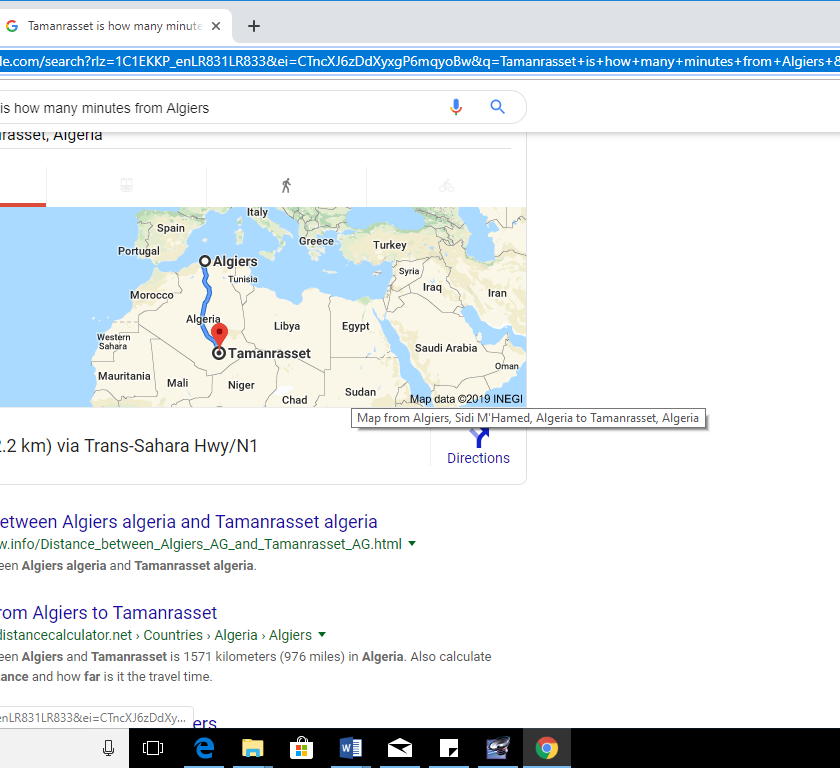
The human smuggling trade through Niger (Agadez) has been going on for decades in that region. It has become economically boomed and continues to be a free market. There is no regulator while hundreds of African have and continue to become victims of this illegal trade in their quest for greener pasture in Europe. The business has attracted lucrative wealth for transporters and their agents. Each month, passenger’s agents would earn between US$14,000 to US$17,000 profit moving migrants through the Sahara Desert along Mali, Libya, and Algeria belts.
Days after arriving in Algeria as a captive, Willie’s name appears on the lists from their smugglers to be set free to continue his journey into Algiers, the capital. In Algiers, engaging into cheap daily labor jobs are the only means of survival for migrants. Willie had no options but to settle for this.
While the males went on the “Chart” (a place in Algiers where migrants gathered in search of daily contracts/hire jobs), the female migrants are seen as precious commodities for their smugglers. They are used as commercial sex workers. For some females, this was a strange way of life they would have to adjust to. Refusing to abide by what their masters or mistresses require leaves them unable to pay for the lodging, feeding and other essential needs. But just 10% of the females would reject working as commercial sex workers. They would rather choose to work at local food centers or work as house maids.
Willie worked at a construction site helping to hand the bricks to the builders to earn his daily meal and little cash for his pocket. His mind is still set on his football career. During his less busy days, he will again spend time practicing with local football teams. He dreamed of one day playing for one of Algeria’s biggest clubs – G.S Scott, but he never forgot his European dream – wanting to play soccer in Spain.
His skills on the pitch were exceptional – winning the admiration of the Algerians – but his illegal status in the country could not again permit him to move freely. No team would sign an illegal migrant. And, after all, life in Algeria was not as he and others perceived before embarking on their journey.
Two months after his awful stay in Algiers, Willie attempted to move into Morocco. It was another hazardous trip, just at the verge of crossing from the Algerian border willie and others were surrounded by a team of Algerian border patrol officers and huge shepherd dogs. Willie’s dreams of entering Europe were dashed! Destination Europe was now destination IOM Transit Camp in Niger for repatriation.
“They took us to the police station, took our names and photos. They put us in three long trucks; we were so many. The people dropped us in the desert between Mali and Niger, no man land and gave us one piece of bread, a bottle of water and a cane of sardine. Those who wanted to go Mali, or Niger would find their own way.”
“We walked for days until we entered Niger at the IOM camp here,” Willie narrated.
Agadez is a major hub for both commercial and human migration between West and North Africa. It occupies 52% of the northern region of Niger and is a strategic route for irregular migration of Africans flow towards Libya and Europe. About hundred thousand migrants travel through this region each year, towards Libya and Europe. According to the XChange, a not-for profit organization that investigates and documents human movement in countries of origin, transit and destination.
Like Willie, dozens of other stranded migrants who get deported from Libya, Morocco, Algeria, Tunisia and surrounding countries are rescued and housed at the International Organization for Migration six transit centers across Niger. The Arlit Transit Center situated in the middle of Niger’s desert has become a safe haven for migrants.
Niger, one of Africa’s poorest countries, is a hotspot for the human trafficking business. Over 4000 undocumented migrants passed through Niger’s northern Agadez weekly between 2015 and 2019, according to the UN Office on Drugs and Crimes.
“We cannot stop people from coming and passing through Agadez, because for centuries people have used this region as a major commercial route for business,” Agadez City Mayor Aboubacar Ajoual said.
While many condemn the illegal movement of migrants towards Europe, the Secretary General of one of Niger’s strong civil society organizations, Alternative Espaces Citoyen A. T. Moussa Tchangari believes no one should be denied free movement in line with the Universal Declaration on Human rights and the ECOWAS Protocol among member states.
“Migration is a right; everyone has the rights to live where they feel comfortable for better life. We are defending the free movement of people.”

The Cross of Agadez
In its December 2018 Report, the International Organization for Migration documented about 24,808 migrants’ inflow into Niger passed through several routes: Agadez through Arlit, Assamaka; Agadez-Seguedine-Sebha; Seguedine. Other routes since February 2016 include Dan Barto, Tahoua, Magaria and Dan Issa. IOM’s January 2019 report furthered that 74% of the voluntarily repatriated migrants have no identification or legal travel documents.
As of the date of my visit to Niger; at least 1,312 migrants had been assisted from six IMO transit camps in Niger through search and rescue operations. Malians account for 34%, Guinea 18%, Ivorian’s 7%, and 41% presenting mixed nationalities including Liberians.
Poverty, bad governance, economic instabilities, lack of jobs and empowerment opportunities for Africans especially youths are major factors leading to the influx of Africans from Guinea, Mali, Niger, Cameroon, Cote d’ lvoire, Senegal, Liberia, Niger, Sierra Leone Burkina Faso, Gambia, Guinea Bissau, Benin and Ghana, among others headed to Europe.
Most Liberians and other African migrants who fled their countries in search for better lives just turned out to be chasing the wind. An unaccounted number of them died in the desert while others now live with physical and psychological scars.
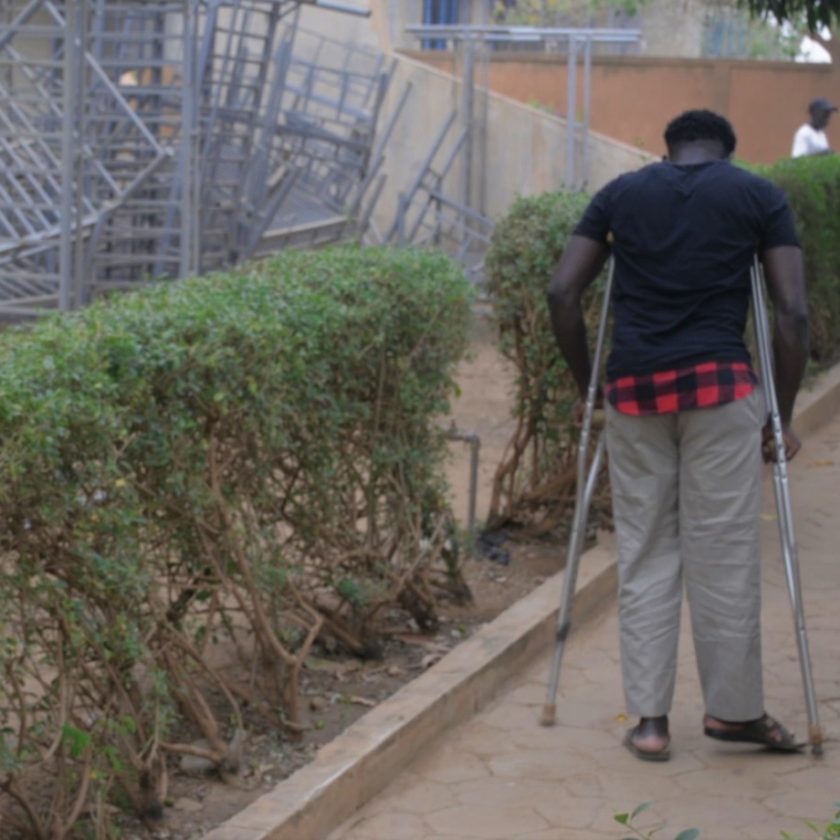
32-year-old Emeka Ido
Thirty-two-year old Emeka Ido (not his real name) started his journey from Delta State, the oil hub in South-West Nigeria. His goal was to enter Europe at the advice of his best friend who fortunately made it into Germany by this same illegal journey.
Emeka was convinced that he would have been successful like his friend. He embarked on the journey full of hope and optimism. He wished he knew he was journey towards his sorrows.
Emeka: “After two days in the desert, the driver came and took us. I don’t know whether he was driving drunk so people fell off the car, I fell from the car too. We were sitting at the top of the motor. While I was struggling to get up because I had not eaten for 3 days, the driver reversed the car and crushed my leg.”
“There was no treatment in that desert. They abandoned me for more than four hours, I lost serious blood.”
“My intention was not to stay in Libya, my intention was to go to Europe. If I had the information that this is what goes on along the way, I would not have risked my life. My family does not even know what I am passing through.”
Emeka was rescued by IOM, given medical assistance and later transferred at IOM’s Eagle Transit Center in Niger’s Capital, Niamey.
He had just buried his mother before embarking his voyage into Europe. With the help of IOM, Emeka was reunited with his family in Nigeria in April 2019.
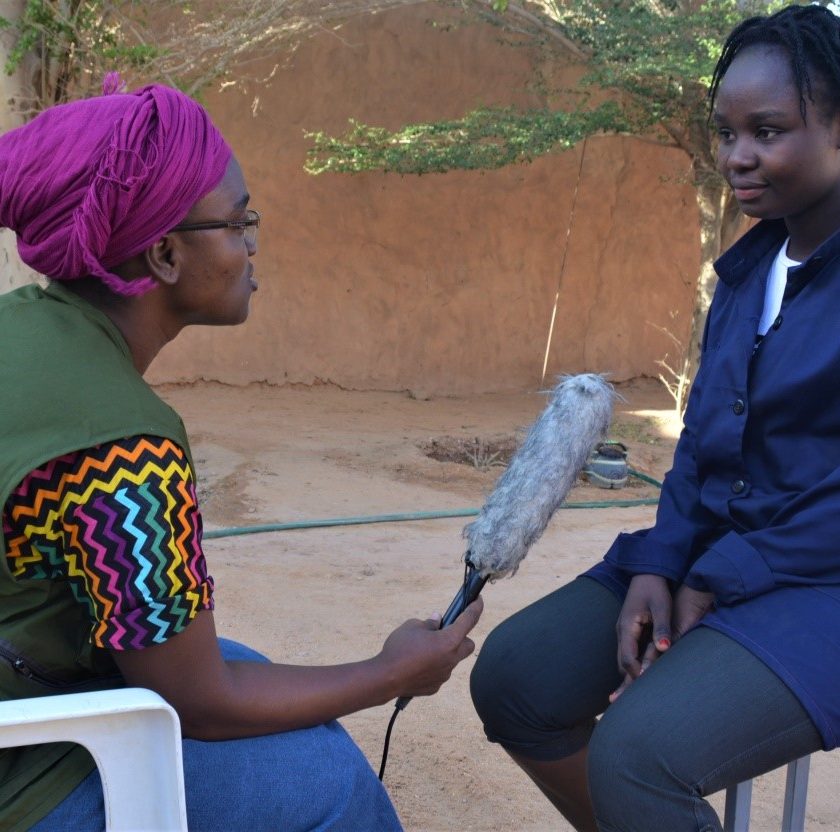
Nataline Hardy shares her story with Evelyn Kpadeh Seagbeh
Nataline Hardy, 23, a Liberian, was forced by her boyfriend (partner) on the journey to Algeria in February 2018. He had been told by a friend only identified as Edward that life was better in Algeria than it is Liberia.
This was Nataline’s first time ever traveling out her country, but it became the worse experience ever in her life. The ground under her feet was crumbling, she became a victim of physical abuse by her smugglers in Algeria who sold her to work as prostitute, but she refused.
Life became so unbearable for her that she contemplated committing suicide. With no money and no prospect of a better life in Algeria, she demanded to return to Liberia. It was at this point she had to make the decision of leaving her boyfriend (King) in Algeria.
She was rescued by IOM and taken to the transit center in Agadez (Northern Niger) and later repatriated to Liberia along with other Liberian migrants in March 2019.
The stories of migrants who traveled through the desert into Libya, Algeria, Morocco, Tunisia and parts of Europe varies from one person to another. The exact number of migrants who died along the way remains undocumented and uncounted. Hundreds of lives have been saved in the desert by the International Organization for Migration (IOM).
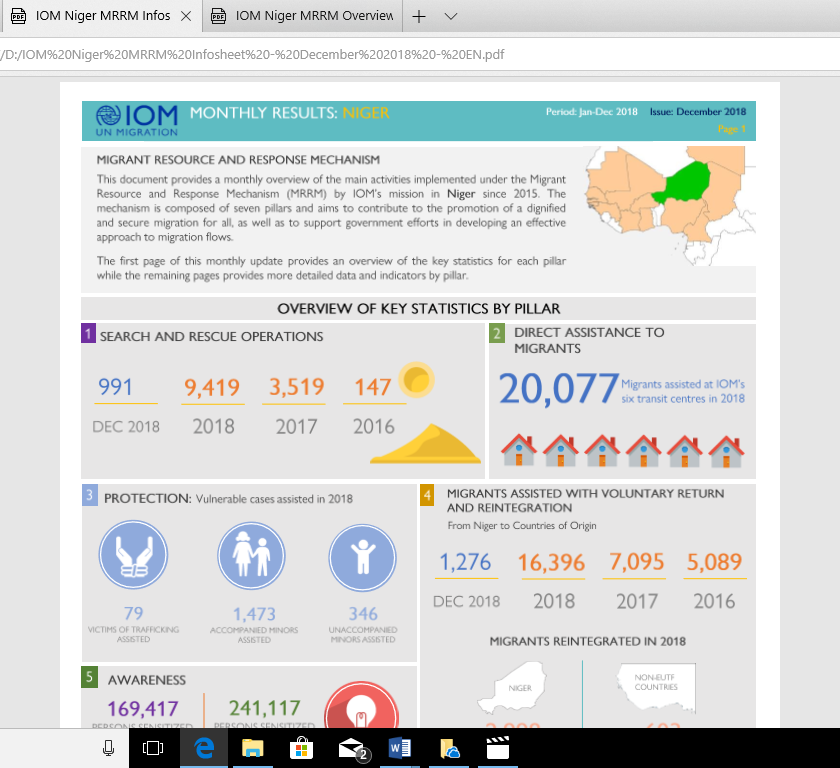
The IOM provides direct assistance to migrants in its six transit centers which are opened and voluntary for migrants who want to return to their country of origin. IOM Mission in Niger assists in distress through search and rescue operation in the Agadez region.
According to IOM’s December 2018 fact sheet, 22, 077 migrants have been directly assisted in 2018. In January 2019, the number increased to 24,808. The migrants have been documented migrating from several different countries from Guinea, Liberia, Sierra Leone, Mali, Benin, Burkina Faso, Guinea Bissau, Pakistan, Bangladesh Togo, Cameroon, Cote d’Ivoire, Niger, Nigeria and Senegal.
As of January 2019, 1,312 migrants in IOM six transit centers have been assisted through search and rescue operations. Malians account for 34%, Guineans 18s%, Ivorian 7% and 41 % accounting for other mixed nationalities including Liberians, according to the IOM’s Niger’s facts factsheets and Chief of Mission, Mr. Martin Wyss.
The total of 91,500 people, both voluntary returnees and deportees arrived in Niger from Libya and Algeria between February and August 2016, with 77% coming from Libya and 23% through Algeria. As reported by IOM and Amnesty International, some of the migrants, especially those coming from Libya, fled sexual violence, abuses and trafficking, an IOM 2017 report states.
Despite the numerous contributions made by the IOM’s Niger Mission in rescuing the lives of thousands of stranded Africans from the desert, the Mission is faced with series of challenges ranging from logistical, operational and diplomatic challenges.
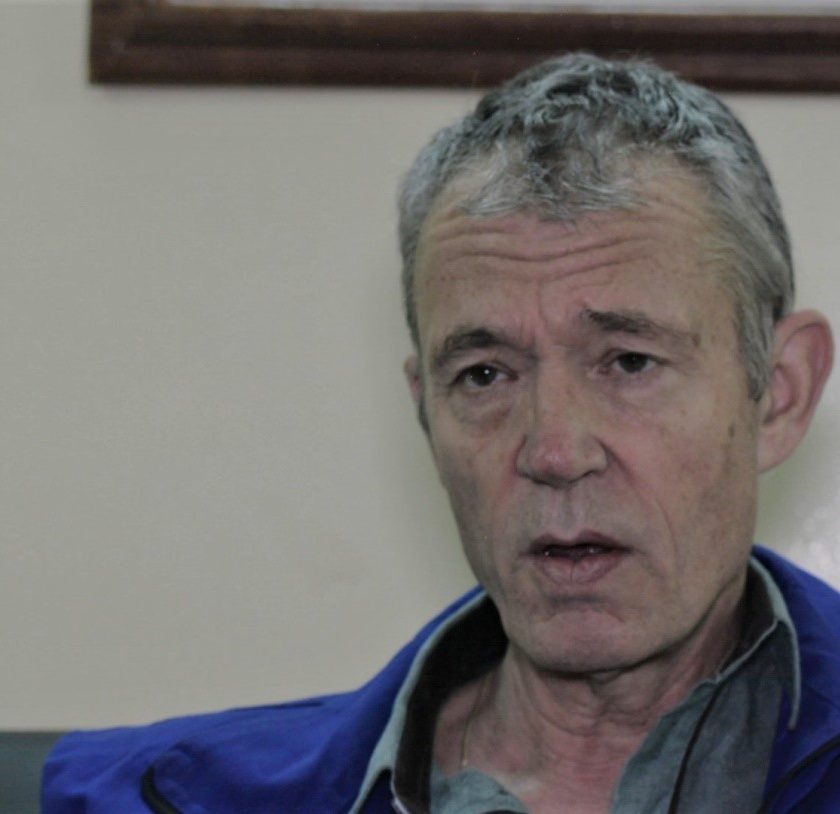
| Mr. Martin Wyss, IOM Niger’s Chief of Mission |
Wyss: “There are logistical and operational challenges, we have political and diplomatic challenges with partners and concern countries or states, we have emotional challenges.”
“We are faced with difficulties to understand the humanitarian situation of certain individuals, women with new born babies, victims of trafficking, etc. All of these situations are frustrating and disappointing to us. We do have people with broken limbs and all types of wounds sustained during their trip or by someone.”
Among these challenges, the IOM’s Chief of Mission pointed out that it is challenging getting citizens of Liberia and Guinea repatriated. This, according to Wyss, is due to their lack of diplomatic representations in Niger. Processing their travel document can also be nightmares.
“For some nationalities, it’s very easy to secure the lassie-passé which is necessary. We need to have this document before we organize the voluntary return operations back to their home country. Some countries, particularly Liberia and Guinea – Conakry, although they are members of ECOWAS, they do not have diplomatic representations here”.
Alleged Corruption Delays Liberian Migrants repatriation process
As Nataline Hardy Parents, Willie Geelor, Siadu Dukuly and some other Liberian Migrants finally arrived back in Liberia with the help of IOM, they faced the alleged corrupt immigration process headed by a former Chief Investigator Chea Nelson. Chea is at the center of allegations of money extortion from parents and family member desperate to see their relatives return.
For some migrants who could not pay physical cash to Nelson, they say, they will have to settle him upon receiving their resettlement package from the IOM upon return to Liberia – the case of Siadu Dukuly, who did not even know when the IOM would give him his resettlement package.
“I spent two months, two weeks in Niger before he (Nelson) could sign my document. I talked to him, I convinced him anyhow, but he said I should give him money. I told him the only way I can be able to give you money is when I get to Liberia, because we are supposed to get something from the organization (IOM)”.
Three of Nelson’s victims admitted to paying him some money in order to have their documents fast tracked and processed for their return to Liberia. These claims of money extortion to process returnees’ documents were strongly denied by Chea Nelson who blamed the delay in processing migrants’ paperwork on the IOM.
“That is funny; pay some money to me in what way? Madam, let me say this to you, I have received two accusations and it has been forwarded to my office, and my office, being a security related office, I have in fact put in a challenge.”
“If you are giving me Chea Nelson US$20 dollars to speed up your process, how do I speed up your process? The only thing I do is to listen to you, write your paper and send it to IOM Niger. It’s from IOM Niger your passport size photo will come, it’s from IOM Niger they will DHL the documents, I don’t bother myself with the rest of the issues of the documents. So if it’s delaying most times, it is with the IOM,” Chea claimed.
Very few of Nelson’s victims have mustered the courage to speak out upon arriving home. Something they dare not do while in Niger for fear that their document process could be jeopardized or fear of falling in trouble with Chea Nelson.
Where is Liberian Government for her citizens?
To date, the Liberian government is yet to help provide concrete financial assistance whether through the International Organization for Migration (IOM), the Ministry of Foreign Affairs or other ministries to have her citizens swiftly repatriated and resettled after being rescued.
The IOM is the only organization providing all the finances assistance and being challenged with the delay of the Liberian Immigration process to have Liberians repatriated.
The Ministry of Foreign Affairs Assistant Foreign Minister for Press and Public Affairs, Mr. Sylvester Pewee, outlined several factors responsible for the government inability to support the IOM. He said it is often because “information about Liberian migrants in Niger has not been confirmed to the Ministry”. He also named the serious economic constraints facing the George Weah’s government as reason for not aiding the stranded Liberians.
“We want to do lots of things, but there’re lots of factors that are pulling us down; we have serious economic challenge in the country, but that does not mean we should abandon our people. We will do everything in our power to work with the IOM to ensure our people are brought to safety,” Asst. Minister Pewee said.
According to the IOM’s December 2018 and January 2019 report, between January 1 to March 31, 2019, 250 Liberian migrants returned to Liberia. While from 2016 to date of the interview a total of 1,062 Liberians have so far returned.
Willie Geelor, Nataline Hardy, Siadu Dukuly, Emeka Ido and hundreds of others African migrants who have gone through the difficult journey of returning home after their terrible experiences in the desert attempting to enter Europe and other countries, it is not the end of the road. They must now start life all over.
Niger’s Legislation To Halt Illegal Migration
The passage of the controversial Bill “36” by the Nigerien Parliament in 2015 has not stopped the illegal movement of African into Europe, although some of the transporters have abandoned the business settling down for a new life; others are also strategizing new ways to continue the lucrative trade. The law which took effect in 2016 criminalizes the transportation of people in Northern Niger, Agadez region which led state security cracking down on transporters and confiscating hundreds of vehicles of people considered violators of the law who were still transporting people across the prohibited areas.
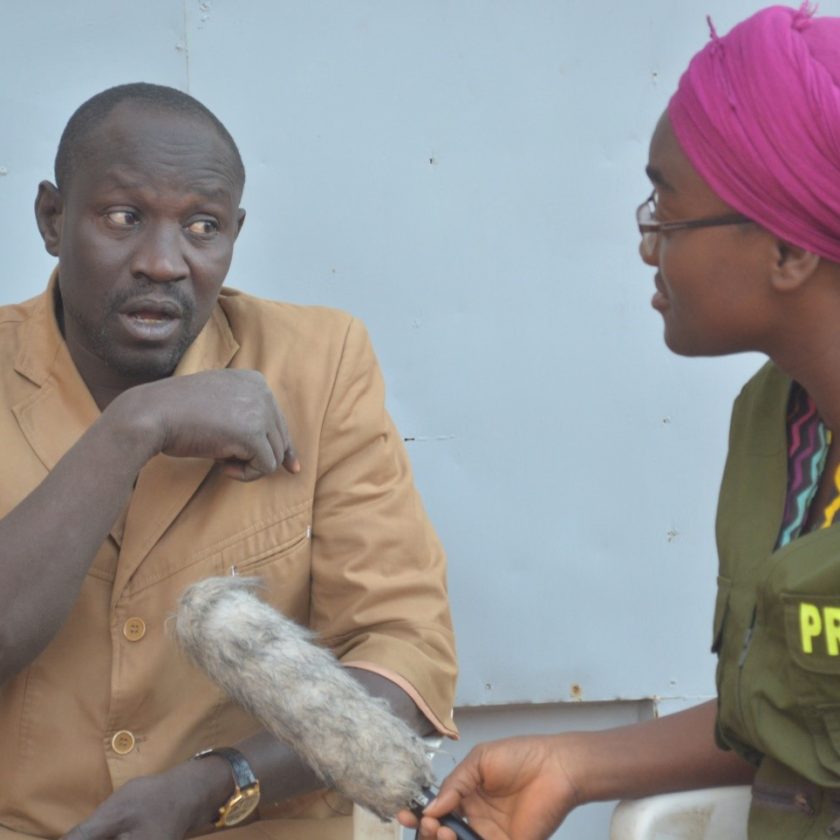
For Addris Salifu, a former migrant transporter, he did the transport business for the 29 years achieving good amount of wealth for him over those years, although he claims that the passage of the legislation has contributed to the migrants taken on more risky routes endangering their lives.
Addris currently owns 13 houses in Agadez, some of which are given out for rent (commercial) thereby generating cash with each of his 4 wives possessing their own house.
“I am an ex-transporter who carried passengers to Libya, at the time people came from Liberia, Ghana, Mali, Togo and everywhere they came here (Agadez) and paid some money to go to Libya, but they stopped me I can’t transport anyone now” Addris said.
With the support of the International Organization for Migration, some of the migrants have begun their new lives now returning to their home country. But it’s just frustrating to know how dozens of Africans and Liberians are risking their lives each day in search of greener pasture into Europe.
As instabilities intensify in the last two months in Libya, the Wednesday July 3, 2019 airstrike on Tajoura Migrants Center near Tripoli leading to the death of at least 40 people and injuring about 130 people has claimed the world’s attention even more to the migration issues. Hundreds of other migrants are escaping into Niger and neighboring countries for rescue by the day.
Edited by Frank Sainworla, Bai Best, Lennart Dodoo & Adolphus Mawolo

